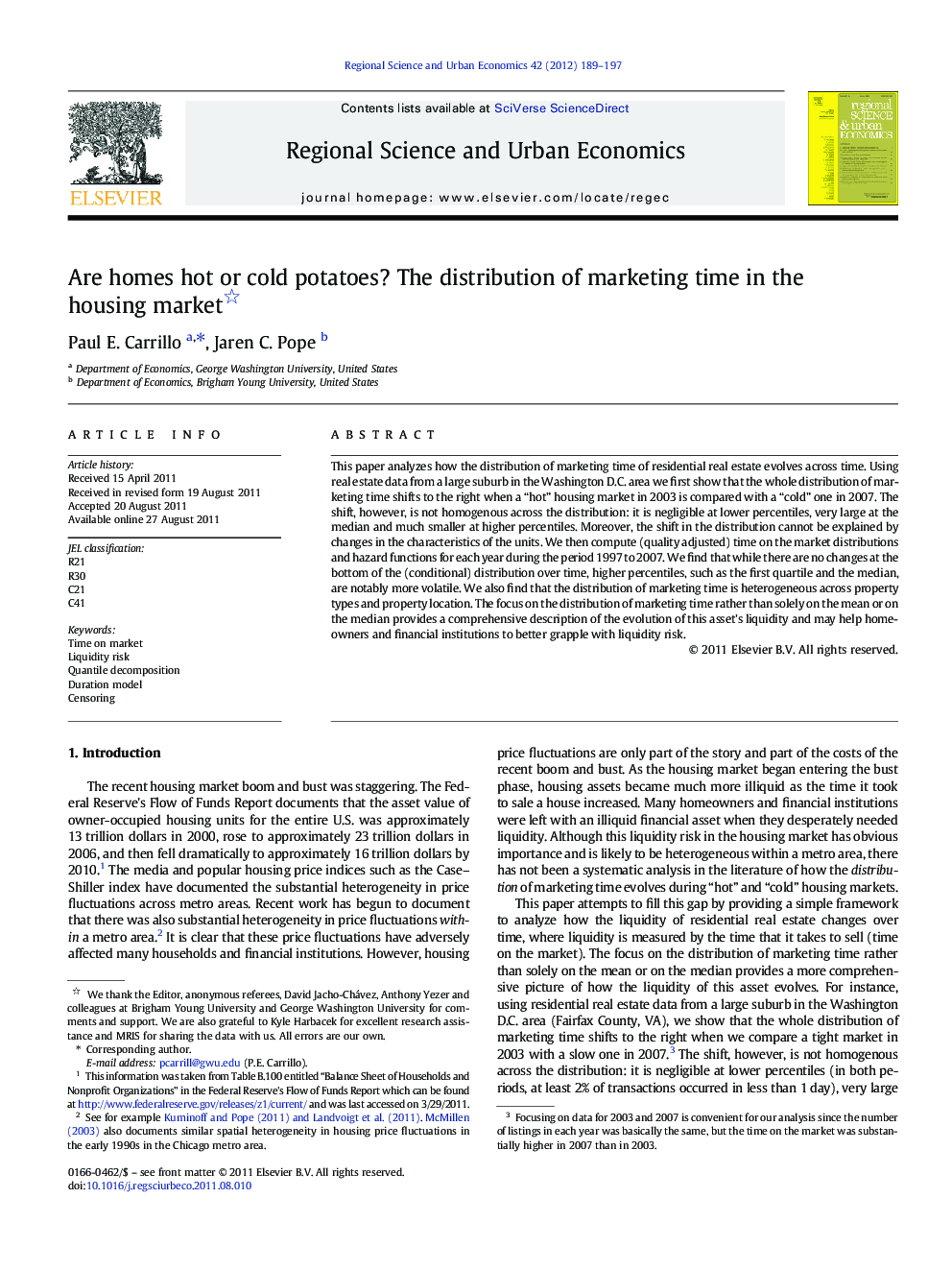| Article ID | Journal | Published Year | Pages | File Type |
|---|---|---|---|---|
| 981113 | Regional Science and Urban Economics | 2012 | 9 Pages |
This paper analyzes how the distribution of marketing time of residential real estate evolves across time. Using real estate data from a large suburb in the Washington D.C. area we first show that the whole distribution of marketing time shifts to the right when a “hot” housing market in 2003 is compared with a “cold” one in 2007. The shift, however, is not homogenous across the distribution: it is negligible at lower percentiles, very large at the median and much smaller at higher percentiles. Moreover, the shift in the distribution cannot be explained by changes in the characteristics of the units. We then compute (quality adjusted) time on the market distributions and hazard functions for each year during the period 1997 to 2007. We find that while there are no changes at the bottom of the (conditional) distribution over time, higher percentiles, such as the first quartile and the median, are notably more volatile. We also find that the distribution of marketing time is heterogeneous across property types and property location. The focus on the distribution of marketing time rather than solely on the mean or on the median provides a comprehensive description of the evolution of this asset's liquidity and may help homeowners and financial institutions to better grapple with liquidity risk.
► This paper analyzes how the distribution of marketing time of residential real estate evolves across time. ► Shift in the distribution is not homogenous: small changes at the bottom but large changes at higher percentiles. ► Shift in the distribution cannot be explained by changes in the characteristics of the housing units. ► Focus on the distribution of marketing time provides a comprehensive description of the evolution of housing's liquidity.
